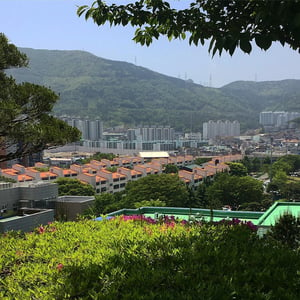Rent in South Korea
While investigating the rental market in Seoul, I spoke with Yonjoo Oh, CEO of Reloko. Yonjoo said it is important for assignees to understand the various ways of renting a property before they arrive in South Korea. In general, there are four major rental payment methods.
Local payment methods: Jeonse & Wolse
Jeonse (전세)
Key money, or Jeonse (전세), is a leasing system unique to South Korea. The Jeonse system involves depositing up to 50% of a property’s value (however, it can be as high as 60-80%) with the landlord for the duration of the lease. The landlord takes the large deposit, invests it, and keeps all the interest earned on the sum. The tenant's deposit is protected by having a lien issued against the property for the amount given. The entire amount is then returned to the tenant at the end of the lease. In cases where the tenant causes damage to the property, key money would be used to repair the unit.
After the deposit is handed over, the tenant can occupy the property for the duration of the lease, which is typically 24 months. The tenant is responsible for paying utilities, internet, phone, cable TV, etc. The Jeonse system is traditionally used by Korean nationals for the domestic rental market.
Wolse (월세)
The deposit plus monthly payment system, or Wolse (월세), is a variation on key money. This process involves having a tenant put down a smaller deposit than is used for Jeonse. The tenant would then make monthly payments of about a twentieth to a tenth of the total deposit. Like the Jeonse system, the tenant is also responsible for utilities and other costs.

The main drawbacks of Jeonse and Wolse are essentially the same: dishonest landlords, variable interest rates, and a rising housing market. Although, the Jeonse system tends to be riskier because the deposit is higher.
Some landlords may have an exorbitant amount of overdue taxes. They may also have liens on the property. In such cases, the government or lienholder may put the apartment up for auction to collect the overdue taxes or loans. When the apartment is sold, the government or lienholder collects what is due from the profits of the auction. Since national tax (국세), local tax (지방세), and liens all take a higher priority than the Jeonse, the tenant may lose some or all of their deposit, depending on how much their landlord owes the government or the lienholder. Therefore, a thorough analysis before signing a lease is essential to avoid any such problems.

Due to the sheer amount of a Jeonse deposit, it is a common practice that tenants acquire the money through a bank loan. Recent reports cite that the average cost of a Jeonse lease in Seoul is roughly USD $300,000. Yonjoo also noted that the cost of a high quality Jeonse property may easily go up to USD $2,000,000, especially in Seoul. If the tenant takes out a loan with a variable annual percentage rate (APR), which is the typical practice, they are exposed to the risk of rising interest rates. However, banks tend to provide very low APRs (around 2-4%) as the deposit is considered collateral.
Jeonse tenants are taking a short position in the housing market. When an apartment rent decreases, the amount of Jeonse deposit should decrease proportionally, but this does not always happen. As a result, the tenants should recoup the difference at lease renewal. And, likewise, when an apartment rent increases, the Jeonse deposit theoretically also increases, and the tenant should pay more to fill the gap when renewing the lease.
Both Jeonse and Wolse systems are considered too risky by assignees and their employers because the deposit is so large and there is no flexibility to break the lease before the end of the contract. Consequently, two other payment methods have been developed to accommodate expatriate needs.

Expatriate payment methods
Advance payment for the full contract period, or Kalse (깔세)
In popular expatriate neighborhoods in Seoul, it is common to pay in advance for the full contract period. After the advance payment, tenants do not have to deposit any money or pay any fees on a monthly basis. If they wish to break the lease, they can do so after the midpoint of the contract period and get back the rent they have already paid. This system is favored by both landlords and assignees because landlords can still receive a large sum of money at once while assignees have the flexibility to break the lease.
Standard Monthly Rent System
Outside of Seoul, it is more common for assignees to rent fully furnished units and pay monthly rents. In cities like Busan, where the expatriate population is relatively small and advance payments are not as prevalent as in Seoul, there are often some entities that deal with landlords directly and sublet furnished units under the standard monthly rent system. This system is comparable to that used in most other countries, i.e., they only require monthly payments from tenants.

No matter which payment system is used, it is important for expatriate assignees to be aware of the unique and often confusing aspects of the South Korean rental market. Special thanks to Yonjoo Oh for her expert insight!




%20(27).png)
%20(28).png)
%20(3).jpg)

